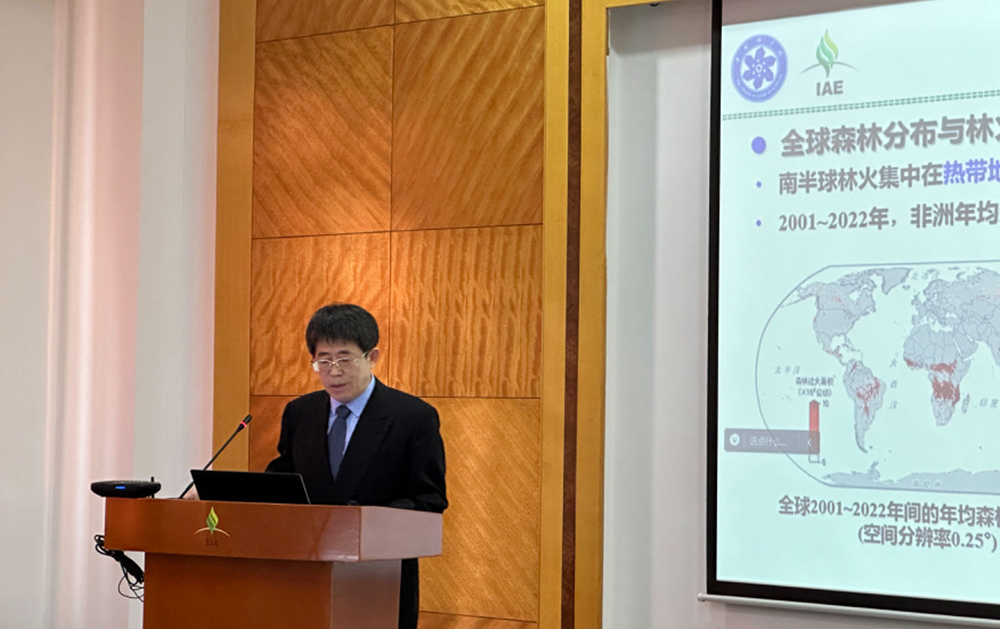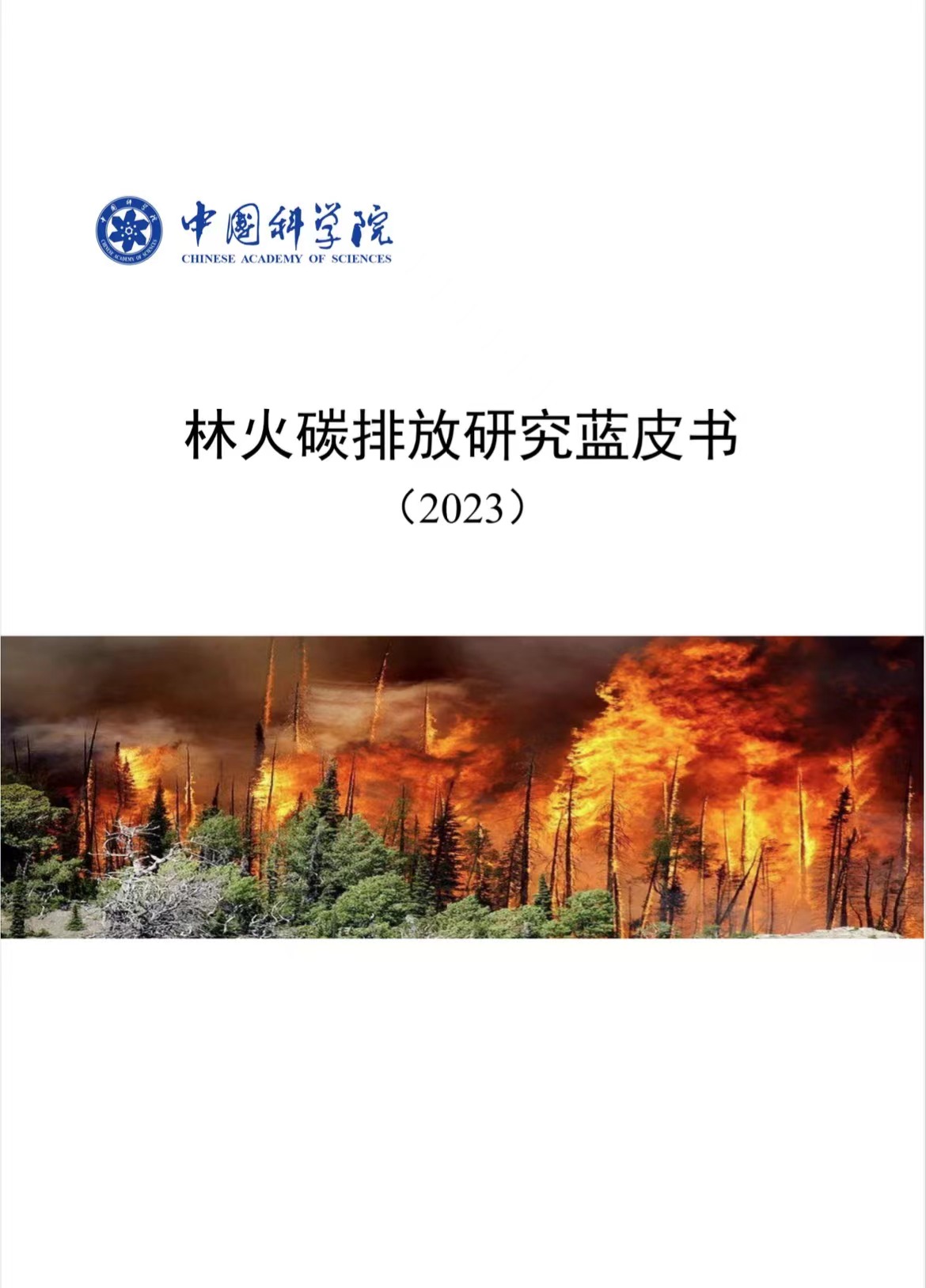

On December 7, the Chinese Academy of Sciences released the "Blue Book on Forest Fire Carbon Emission Research (2023)". Zhu Jiaojun, director of the Shenyang Institute of Applied Ecology, Chinese Academy of Sciences and academician of the Chinese Academy of Engineering, said at the press conference that forest fires have become a source of carbon emissions that cannot be ignored. It is recommended to include them in the global carbon accounting system and establish a full-scale carbon accounting system that includes natural processes. .
The 28th Conference of the Parties (COP28) of the United Nations Framework Convention on Climate Change is being held in Dubai.
On December 7, the Chinese Academy of Sciences released the "Blue Book on Forest Fire Carbon Emission Research (2023)" (hereinafter referred to as the "Blue Book").
The "Blue Book" points out that the current global carbon emissions accounting system does not cover forest fire carbon emissions, nor does it consider controlling them by adjusting forest management measures. However, in the 22 years from 2001 to 2022, global forest fires emitted a total of 33.9 billion tons of carbon dioxide, which can increase atmospheric carbon dioxide concentration by 4.35ppm (one part per million). Forest fires have become an important source of carbon emissions that cannot be ignored.
In view of this, the "Blue Book" recommends that forest fire carbon emissions be included in the global carbon accounting system , a full-scale carbon accounting system including natural processes be established , and a comprehensive and scientific carbon emission monitoring and measurement system be established. At the same time, the risk of forest fire carbon emissions should be included. Prevention and control should be integrated into the carbon trading system of the carbon sink forest market.
Forest fire is a common disturbance process in forest ecosystems, which significantly affects the composition, structure and succession characteristics of forests, thereby changing the material cycle and energy flow of forest ecosystems. At the same time, forest fires have obvious human intervention and controllable attributes.

In the past 22 years, global forest fires have emitted a total of 33.9 billion tons of carbon dioxide, with an annual average of 1.54 billion tons, which can increase atmospheric carbon dioxide concentration by 4.35ppm (one part per million). It has become an important current source of carbon emissions that cannot be ignored.
The frequent occurrence of extreme forest fire events is the main reason for the increase in global forest fire carbon emissions in recent years.
Due to the implementation of active forest fire prevention and control policies, China's forest fire carbon emissions showed a significant downward trend from 2001 to 2022, with the average annual carbon dioxide emissions being 10 million tons. China's forest area accounts for 5.4% of the world's total, but forest fire carbon emissions account for only 0.65% of the world's total forest fire carbon emissions, significantly lower than the global average.
Experts attending the meeting said that in terms of forest fire carbon emission research and other aspects, the "Blue Book" made China's voice heard and provided scientific support for addressing climate change.
At the press conference, Zhu Jiaojun, director of the Shenyang Institute of Applied Ecology, Chinese Academy of Sciences and academician of the Chinese Academy of Engineering, told ThePaper.com that he would strengthen scientific research and international cooperation on forest fire carbon emissions and called for the launch of relevant international major science projects .

On December 7, the Chinese Academy of Sciences released the "Blue Book on Forest Fire Carbon Emission Research (2023)". From 2001 to 2022, China's forest fire carbon emissions showed a significant downward trend, with the average annual carbon dioxide emissions reaching 10 million tons. Carbon emissions from forest fires are significantly lower than the global average.
Between 2001 and 2022, the global average annual forest fire area was 46.95 million hectares, which was 11 times the average annual increase in the area of artificial forests during the same period.
The "Blue Book" shows that there are obvious spatial differences in carbon dioxide emissions from forest fires around the world, and carbon dioxide emissions from forest fires in high-latitude coniferous forests in the northern hemisphere are showing a rapid increase trend. Countries with large forest fire areas and large carbon emissions in the world include Brazil, Russia, Canada and the United States. In the past 22 years, the carbon dioxide emissions from forest fires in the four countries mentioned above were 4.774 billion tons, 3.806 billion tons, 1.374 billion tons, and 1.129 billion tons respectively; their forest fire areas were 63 million hectares, 50 million hectares, 11 million hectares, 09 million hectares.

The frequent occurrence of extreme forest fire events is the main reason for the increase in global forest fire carbon emissions in recent years. The direct emission of carbon dioxide from extreme forest fire events in Canada in 2023 has exceeded 1.5 billion tons, which is higher than the total carbon dioxide emissions from forest fires in Canada in the past 22 years (1.374 billion tons).
The "Blue Book" sorted out typical extreme forest fire events around the world. Taking the extreme forest fire event in Canada in 2023 as an example, the forest fires directly emitted more than 1.5 billion tons of carbon dioxide, which is higher than the carbon dioxide emissions produced by forest fires in Canada in the past 22 years. The total amount (1.374 billion tons) seriously weakens the carbon sink function of the forest ecosystem.
In addition, from May to August 2023, Canadian forest fires emitted a total of 10.02 million tons of fine particulate matter PM2.5. The environmental pollution caused not only affected the entire country, but also had a significant impact on the air quality in vast areas of the northern hemisphere through atmospheric circulation. Influence.

The "Blue Book on Forest Fire Carbon Emission Research (2023)" released by the Chinese Academy of Sciences recommends the establishment of a unified standard forest fire carbon emission measurement and assessment system.
In addition to establishing a full-scale carbon accounting system that includes natural processes, the Blue Book also recommends deepening scientific research and international cooperation on forest fire carbon emissions. Strengthen relevant basic research and key core technology research, build a forest fire risk identification, prediction, early warning and prevention and control technology system, develop post-disaster vegetation reconstruction and carbon sink rapid recovery technology, and establish a unified standard forest fire carbon emission measurement and assessment system.
In addition, the "Blue Book" recommends strengthening extreme forest fire prevention and management. Forest combustible material disposal and fire source control are key measures to prevent forest fires. It is recommended to incorporate combustible material treatment into forest management, and reduce the combustible material load and the intensity of forest fires through planned fires, mechanical removal, etc.

The blue book, led by the Shenyang Institute of Applied Ecology, Chinese Academy of Sciences, and jointly compiled by the Institute of Earth Environment, Chinese Academy of Sciences and the Institute of Atmospheric Physics, Chinese Academy of Sciences, presents the latest results of research on global forest fire carbon emissions by experts from the Chinese Academy of Sciences.